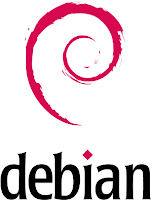Installating the SSL Certificate and setting up in parallel plesk control panel 9.5:
I am having Linux virtual dedicated server which was brought from godaddy. And i have installed the parallel plesk control panel 9.5. I want to install ssl certificate to my domain(www.domain.com).- Generate and Submit the Certificate Signing Request (CSR).
- To Generate and Submit the Certificate Signing Request (CSR).
- To Download your Certificate.
- Install SSL and Intermediate Certificates in Parallels Plesk Panel 9.5.
To Generate and Submit the Certificate Signing Request (CSR)
- Log in to Parallels Plesk Panel; then select Home from the left-hand menu.
- In Security Group, Click the SSL Certificates that you want to generate the CSR for.
- Click Certificates in the Services Group.
- Click Add SSL Certificate. Fill the following fields.
- Specify a certificate name.
- Select the bit size from the drop-down list. "2048".
- Select a country from the drop-down list.
- Specify the state or province.
- Enter the name of the city in which your organization is registered/located.
- Enter the Organization name.
- Enter the Department in the fields provided.
- Enter the Domain Name for which you want to generate the certificate signing request.
- Click the Request button to generate a certificate signing request and add it to the repository.
- Return to the Certificates page from the list at the bottom of the page.
- Click the certificate name that you just created. Copy the content of the CSR box.
- Paste the CSR into our online enrollment form to start the processing of your certificate request.
To Request Your SSL Certificate
- Log in to godaddy site and select your Account Manager.
- In the My Products section, select SSL Certificates.
- In Set up New Certificate on the right, select the credit you want to use and click Continue.
- To the right, click Manage certificate.
- Click Request Certificate next to the certificate you want to activate.
- Indicate whether the domain you are requesting the certificate for is hosted with us or with a third party.
- Generate a CSR on your Web server and enter it in the field. Be sure to include the
-----BEGIN CERTIFICATE SIGNING REQUEST-----and-----END CERTIFICATE SIGNING REQUEST-----lines. - Specify your certificate issuing organization. Click Next and follow any remaining steps.
To Download your Certificate
- Log in to godaddy site and select your Account Manger.
- In the My Products section, select SSL Certificates.
- Next to the certificate you want to manage, click Manage Certificate.
- From the Filters list, click Certificates and then click the common name for the certificate you want to download.
- Click Download.
- From the Server type field, select the server on which you're installing the certificate.
- Click Download Certificate and specify a location to save the file.
- Click Close.
To Install SSL and Intermediate Certificates in Parallels Plesk Panel 9.5
- Log in to Parallels Plesk Panel. From the left-hand menu, in Security group select SSL Certificate.
- Click on the Certificate name.
- Click Browse and locate your signed SSL certificate.
- Select the certificate file and then click Send File.
- Navigate to the location of the saved site certificate you received from us. Select it, then select Send File - this will upload and install the certificate against the corresponding private key.
- On the displayed list, click on the name of the certificate.
- Open the certificate bundle (gd_bundle.crt) in a text editor and copy and paste its contents into the box labeled CA Certificate.
- Click the Send Text button.
- select Home from the left-hand menu. Click the IP Addresses.
- click the Ip address where your hosting is done.
- At the top of the page, change the SSL Certificate field to the certificate you just installed and then click OK.
- Click Home.
- Click Service Management.
- If your server is running Linux, stop and start the Apache process. If your server is running Windows, start and stop the DNS service.









